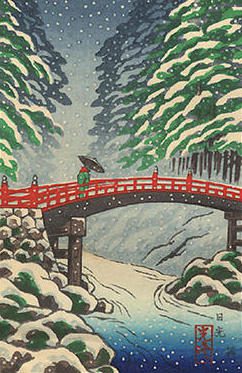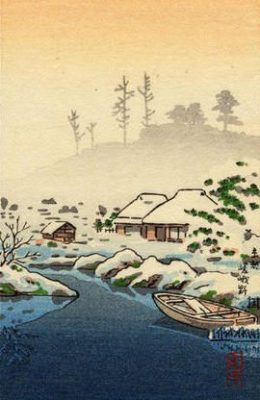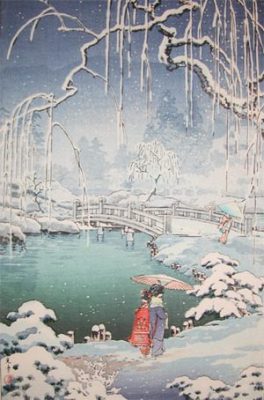Japanese art and Tsuchiya Kōitsu: Winter Scenes
Lee Jay Walker
Modern Tokyo Times

Tsuchiya Kōitsu was born during the early Meiji Period and died in 1949. Accordingly, he was born during the revolutionary Meiji Period (1868-1912), which altered the artistic, economic, military, social, and political environment.
In this article, the focus is on the stunning winter scenes. However, the first image of the ‘Sacred Bridge’ (The Shinkyo Bridge) also provides a cultural and religious angle. This art piece is set in Nikko, where the richness of culture, history, nature, and religion fuse naturally. Therefore, people walk over this bridge before visiting Buddhist temples and Shinto shrines in Nikko.

The art of Kōitsu is remembered for his adorable landscapes, utilizing snow, his approach to light, and other important artistic angles.
The Koller Collection of Asian Art says, “He continued to produce lithographs until 1905, when he began to suffer from lung inflammation and work in the medium became potentially fatal. After abandoning lithography and working primarily in painting for nearly three decades, Kōitsu started designing more landscapes for woodblock prints (fukei-ga) in 1931. His return to printmaking is typically traced to the apocryphal meeting with esteemed print publisher Watanabe Shōzaburō (1885–1962) at a memorial exhibition commemorating Kiyochika.”

Tsuchiya Kōitsu was developed under the acclaimed Kobayashi Kiyochika (1847-1915). Indeed, they worked together for nearly two decades. Accordingly, he produced kosen-ga (light ray pictures) and focused on shin-hanga prints – and other forms of printmaking.

Modern Tokyo News is part of the Modern Tokyo Times group
http://moderntokyotimes.com Modern Tokyo Times – International News and Japan News
http://sawakoart.com – Sawako Utsumi’s website and Modern Tokyo Times artist
https://moderntokyonews.com Modern Tokyo News – Tokyo News and International News
PLEASE JOIN ON TWITTER
https://twitter.com/MTT_News Modern Tokyo Times